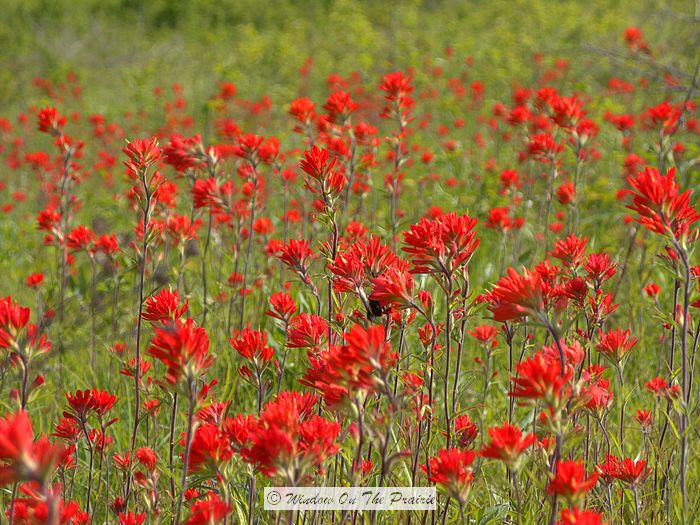

If you have pets or small children, this may not be the best plant for. This native perennial does best in gravelly soil and seems to enjoy the dry heat of. The green and purple berries of the Texas Lantana are poisonous to humans and livestock. That’s because their roots absorb and concentrate. This spiky orange-red flower is one of the larger varieties of Paintbrush. Indian Paintbrush stems and roots are highly toxic to humans and animals. Adding compost in the spring can help encourage growth, but don’t add any traditional fertilizers to the surrounding soil. We investigated a possible mechanism for this maintenance of bract color polymorphism in C. Indian Paintbrush thrives in rough conditions and won’t do well with fertilizer.

Wear gloves and wash hands after handling. Populations of scarlet Indian paintbrush (Castilleja coccinea) in the Midwestern United States exhibit a bract color polymorphism, with each population having predominantly yellow or scarlet bracts.
#Scarlet paintbrush plant toxicity full
Plants doing poorly sometimes respond to additional rhizobium applications. These full and beautiful new arrivals make an instant bouquet when paired together. It is drought tolerant and will survive during long dry spells. Thrives in full sun in well-drained soils.It is the easiest of the species to cultivate. Lupinus texensis is one of five Bluebonnets recognized as the Texas State Flower. It is frequently inter-planted with summer- or fall-flowering plants that emerge as the Bluebonnets are setting seed and senescing. Dock plants contain oxalates and can be poisonous if ingested in. Castilleja coccinea Rare Plant Profile, page 3 of 10 Life History Castilleja coccinea, scarlet paintbrush, is a showy member of the Orobanchaceae, commonly referred to as the broomrape family (although some sources still place it in the figwort family, Scrophulariaceae). Beautiful in large drifts or grown in well-drained containers, Texas Bluebonnet is increasingly cultivated in sunny gardens. Through good pasture management, recognizing toxic plants, and by understanding the effects of toxins on animals, plant poisoning can be largely avoided. Indian Rice Grass is highly palatable to domesticated. Texas Bluebonnet is a common sight along roadsides and fields, blanketing them in a sea of azure blue in spring. Texas Bluebonnet is a winter-hardy annual and this iconic wildflower forms attractive rosettes in winter. The vibrant blossoms provide nectar for bees and attracts butterflies. Blooming in early to late spring (or later depending on spring temperatures), they are borne on upright stems, well above the foliage of oblong palmate light-green compound leaves. Native to Texas, Lupinus texensis (Texas Bluebonnet) is a low-growing annual boasting elongated clusters packed with up to 50 fragrant pea-like flowers, deep bright blue at the bottom and conspicuously white on the top.


 0 kommentar(er)
0 kommentar(er)
